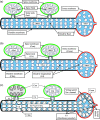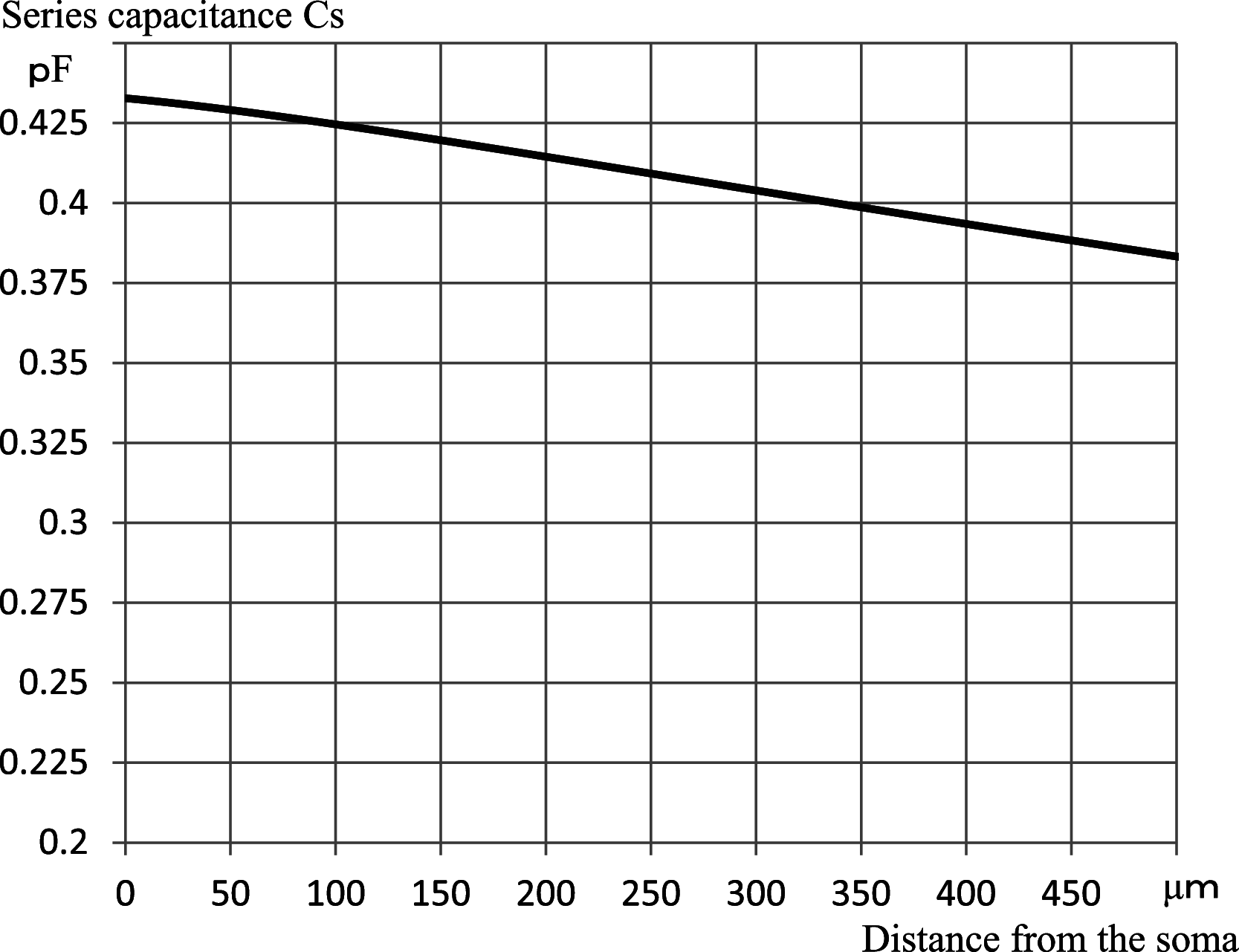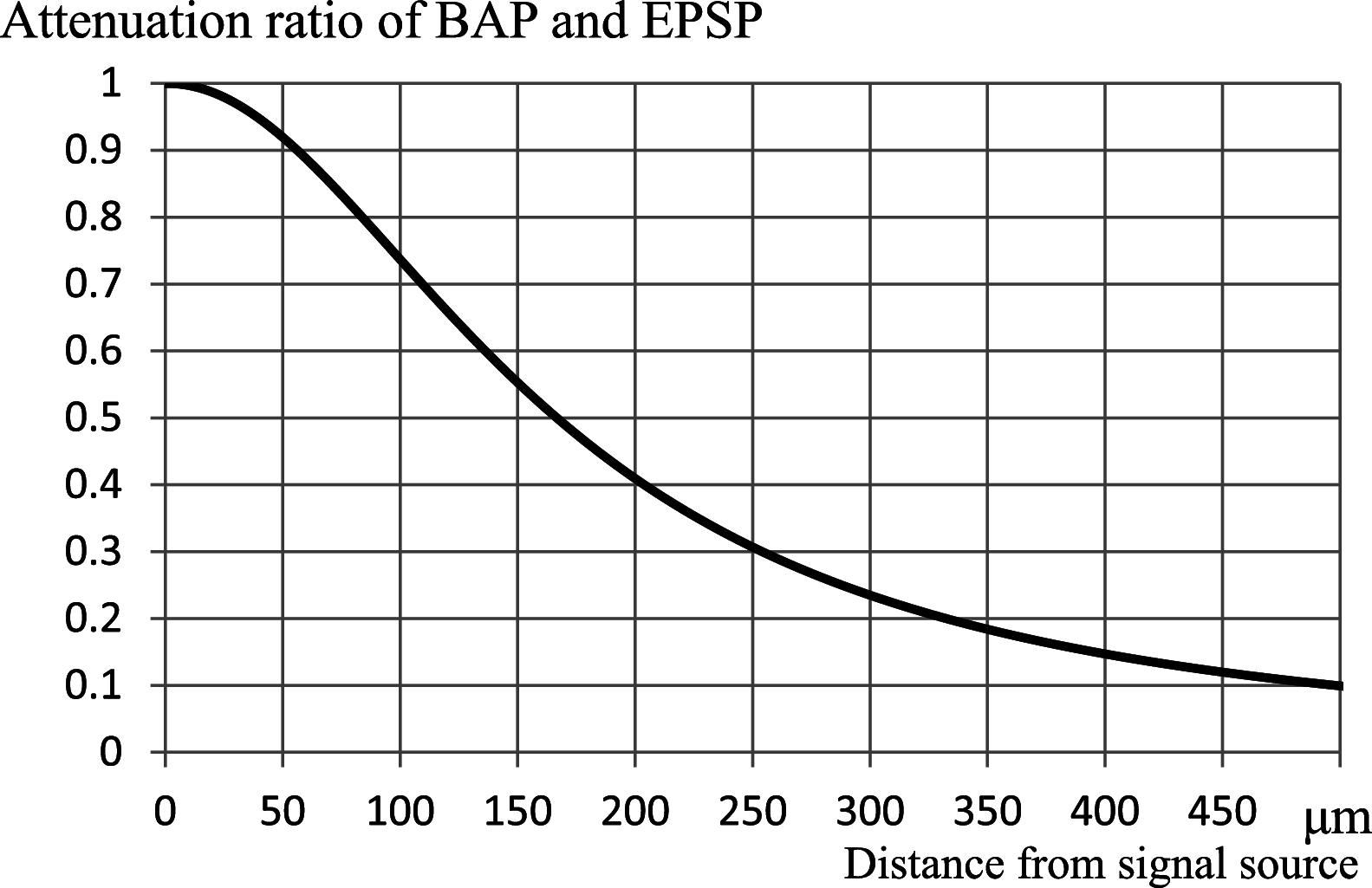Analysis of the mechanism of synaptic integration focusing on the charge held in the spine
- PMID: 35004103
- PMCID: PMC8685514
- DOI: 10.2142/biophysico.bppb-v18.036
Analysis of the mechanism of synaptic integration focusing on the charge held in the spine
Abstract
Successful synaptic integration is said to require that multiple excitatory postsynaptic potentials (EPSPs) occur almost simultaneously over a short period of time, so that they overlap and increase. However, if brain function is based on a chain of successful synaptic integrations, then constraints on the spacing of multiple EPSP generation must be released to allow for a higher probability of successful synaptic integration. This paper demonstrates that Ca2+ ions retained in spines after EPSP generation polarize spine neck fluid and dendritic fluid as a dielectric medium, that polarization is transmitted through dendrites to the cell body (soma), that polarization is enhanced by the addition of polarization from each spine, and that I propose that synaptic integration is successful when the membrane potential, as determined by the enhanced polarization and membrane capacitance, reaches the threshold of voltage-gated Na+ channels. Furthermore, the approach taken in this study suggests that a single neuron can integrate synapses for many combinations of synaptic inputs, that successful synaptic integration depends on spine neck capacitance and spine head size, and that spines farther from the soma are able to contribute to successful synaptic integration, and led to the elucidation of a number of important issues, including the fact that inhibitory post-synapses on dendrites suppress s effectively synaptic integration.
Keywords: Ca2+ ion; action potential; dielectric constant; membrane potential; polarization.
2021 THE BIOPHYSICAL SOCIETY OF JAPAN.
Figures





References
-
- Stuart, G., Spruston, N., Häusser, M. Dendrites Third edition. (Oxford University Press, Oxford, 2016).
-
- Yuste, R. Dendritic Spines. (Massachusetts Institute of Technology Press, Cambridge, 2010).
-
- Yuste, R., Tank, D. W.. Dendritic integration in mammalian neurons, a century after Cajal. Neuron 16, 701–715 (1996). https://doi.org/10.1016/S0896-6273(00)80091-4 - PubMed
-
- Tønnesen, J., Nägerl, U. V.. Dendritic spines as tunable regulators of synaptic signals. Front. Psychiatry 7, 1–10 (2016). https://doi.org/10.3389/fpsyt.2016.00101 - PMC - PubMed
-
- Yuste, R. Dendritic spines and distributed circuits. Neuron 71, 772–781 (2011). https://doi.org/10.1016/j.neuron.2011.07.024 - PMC - PubMed

